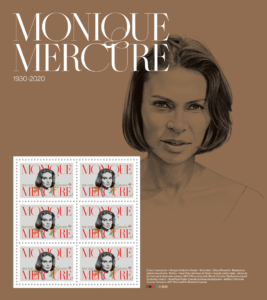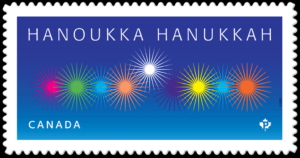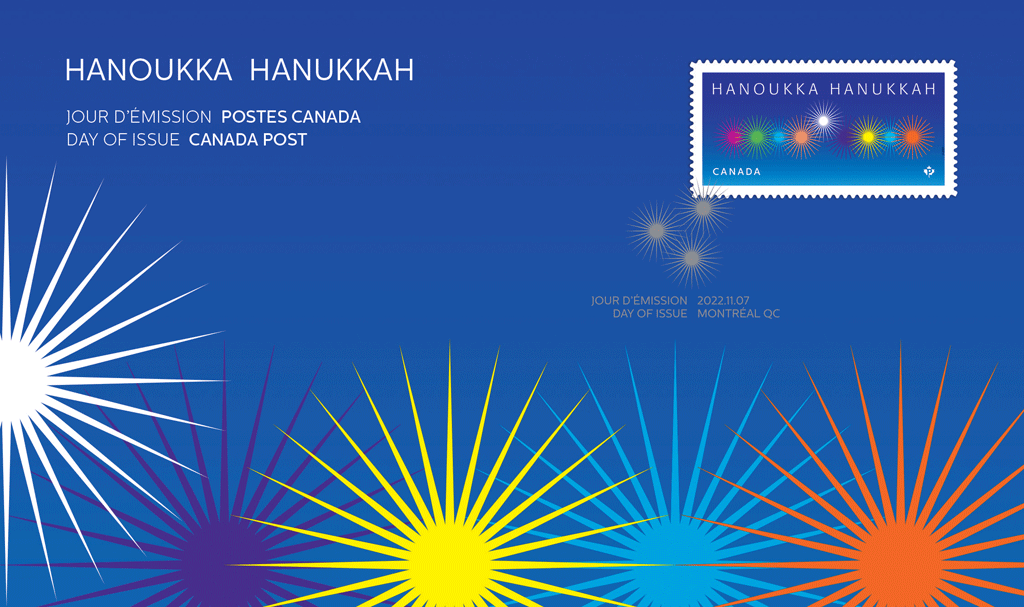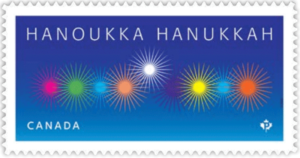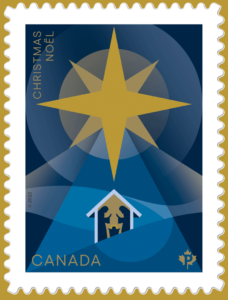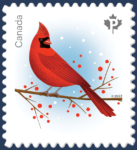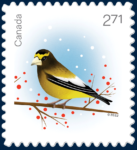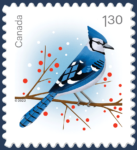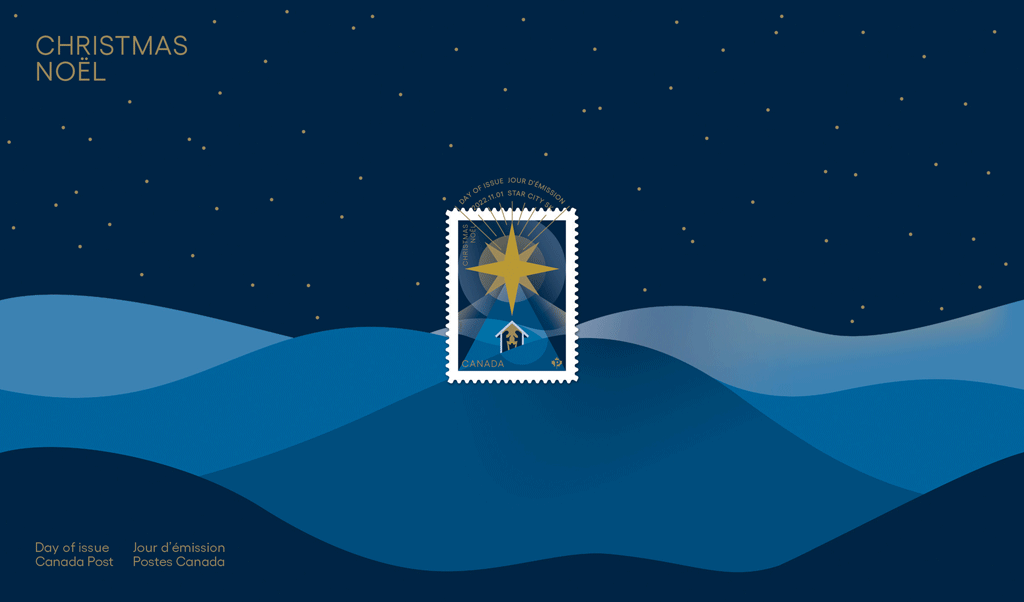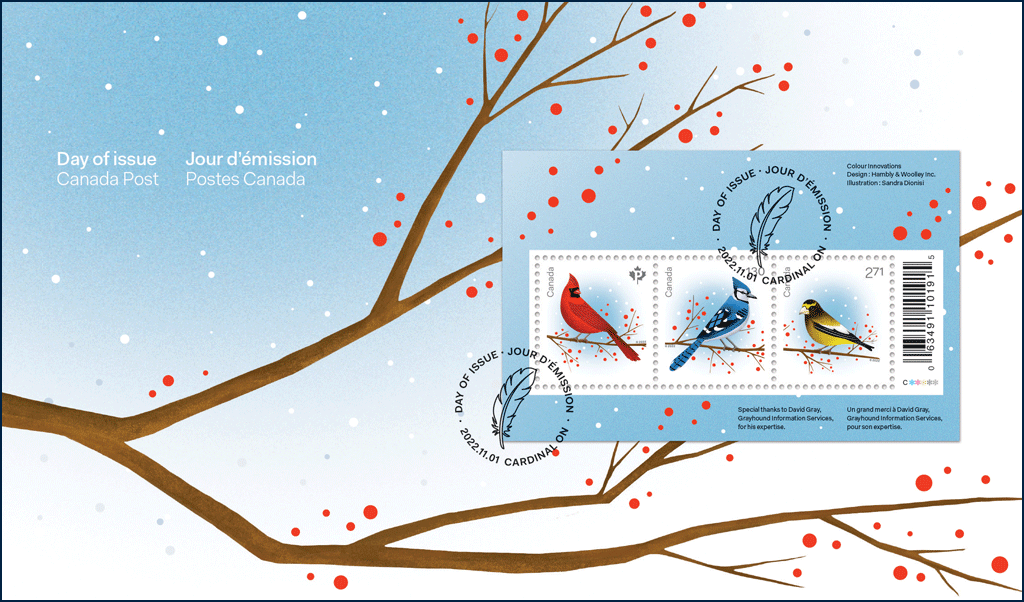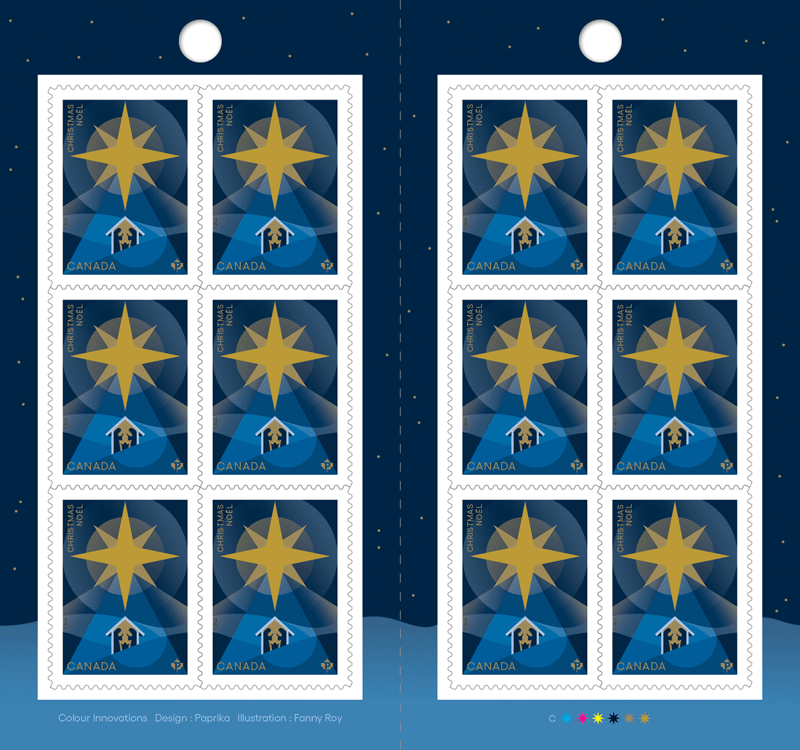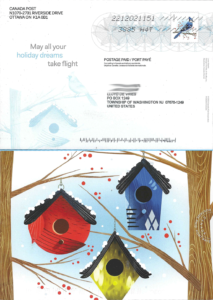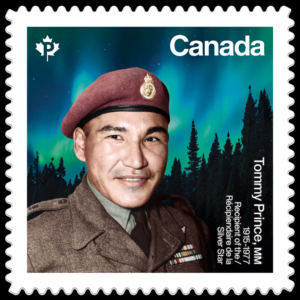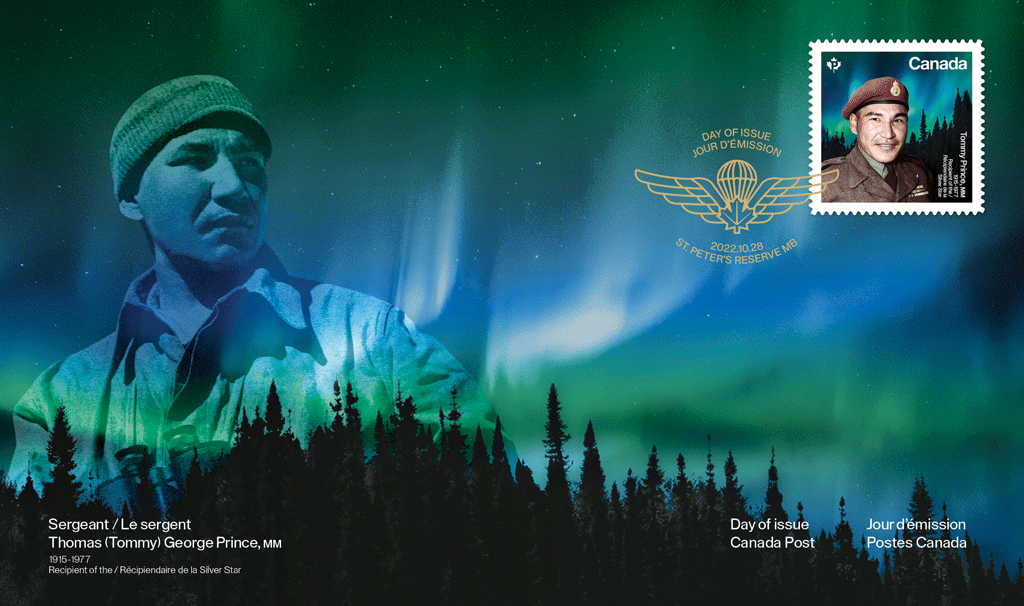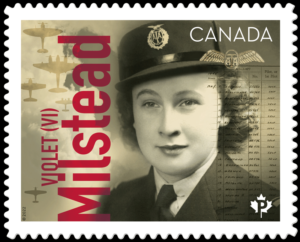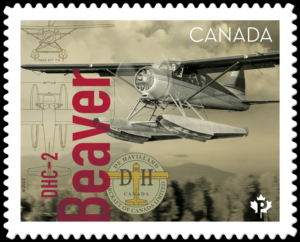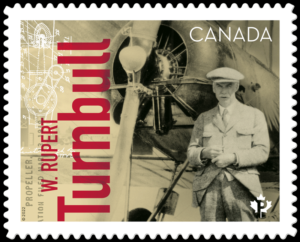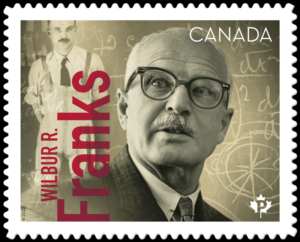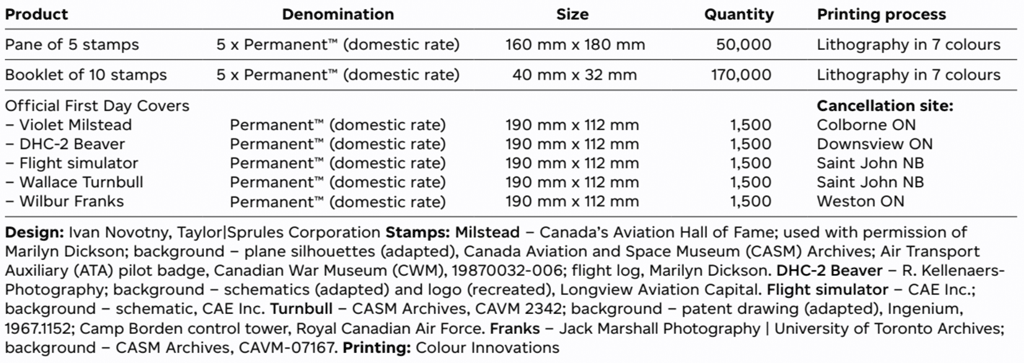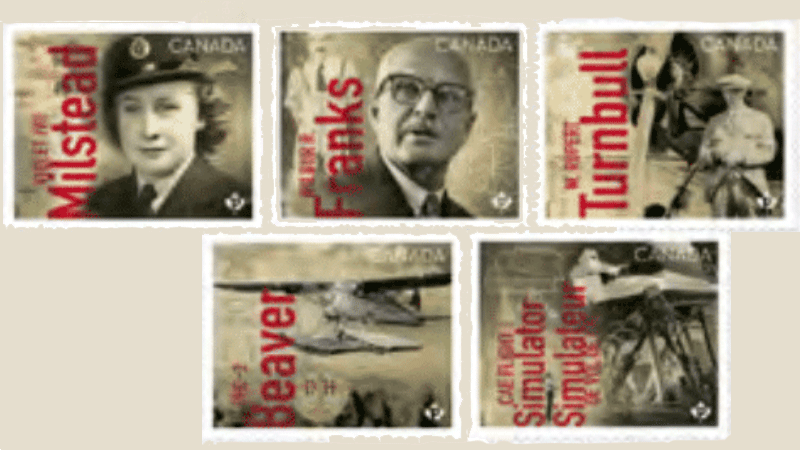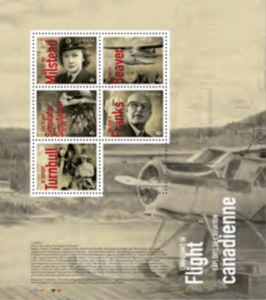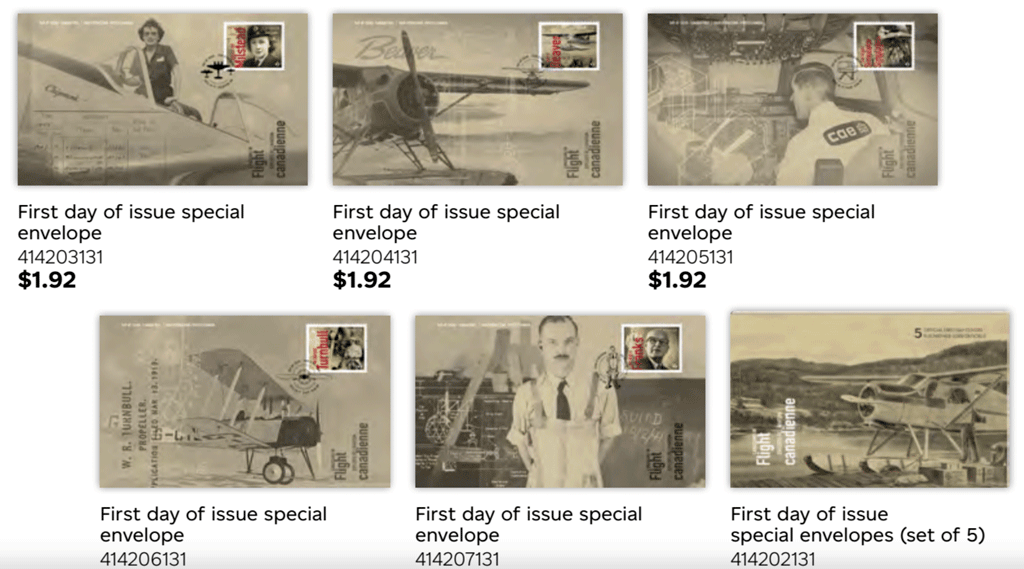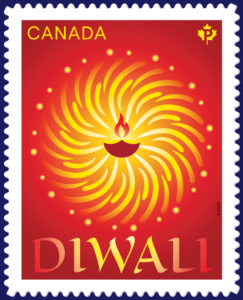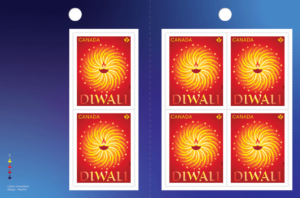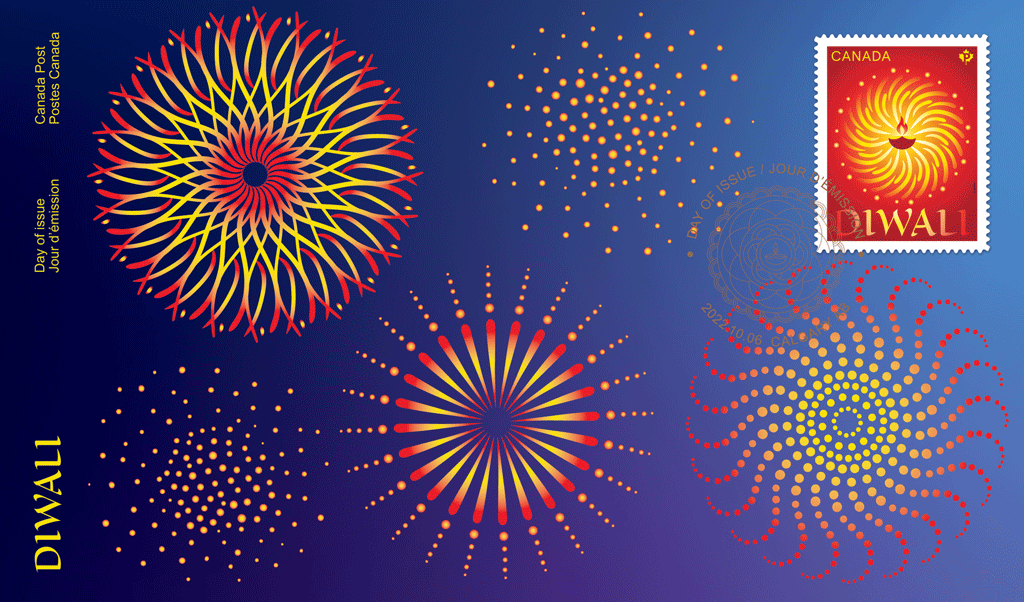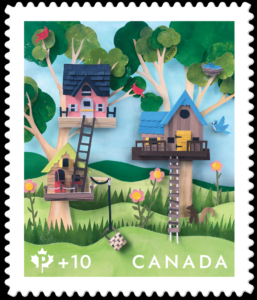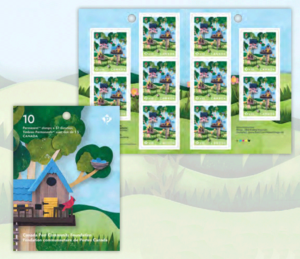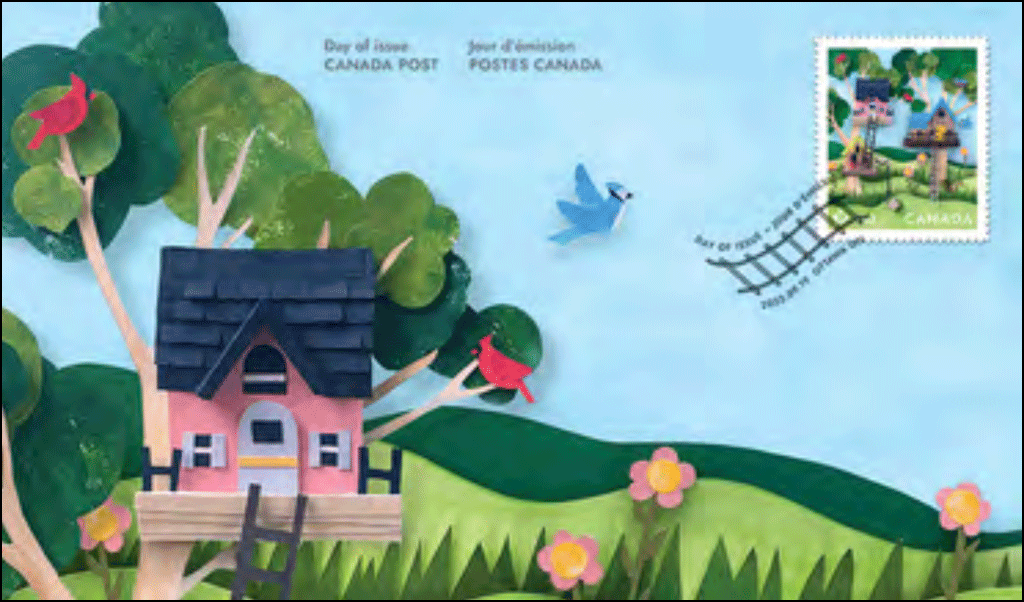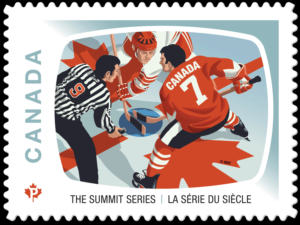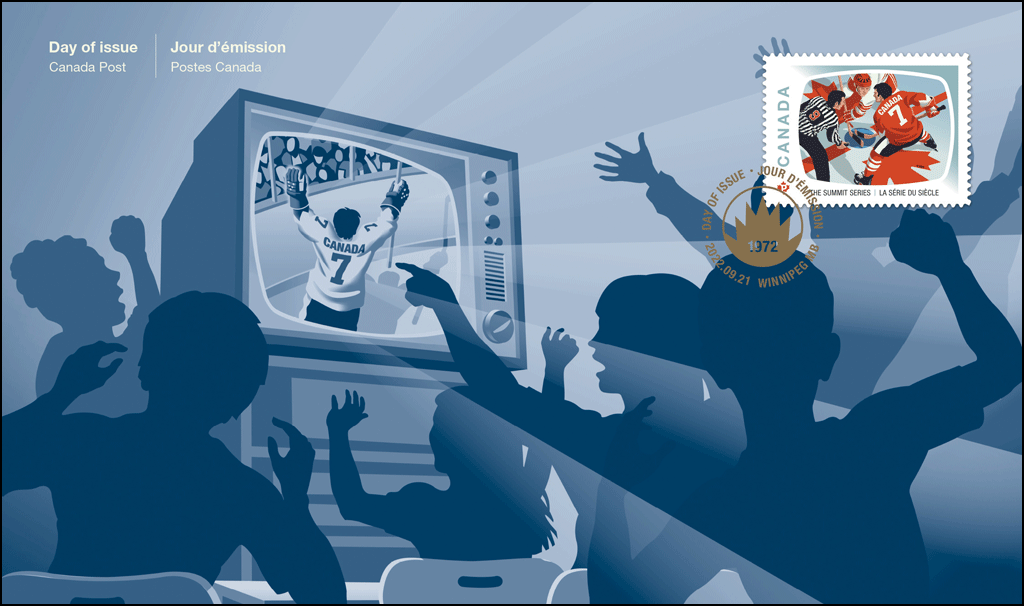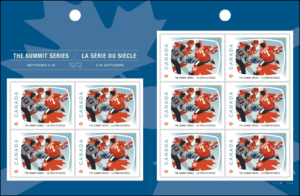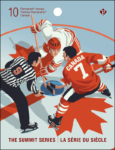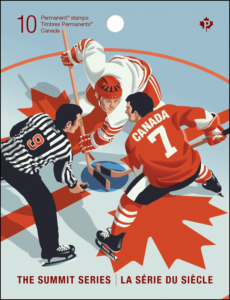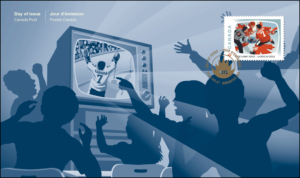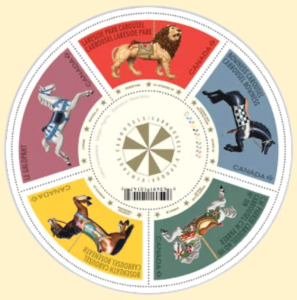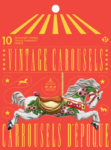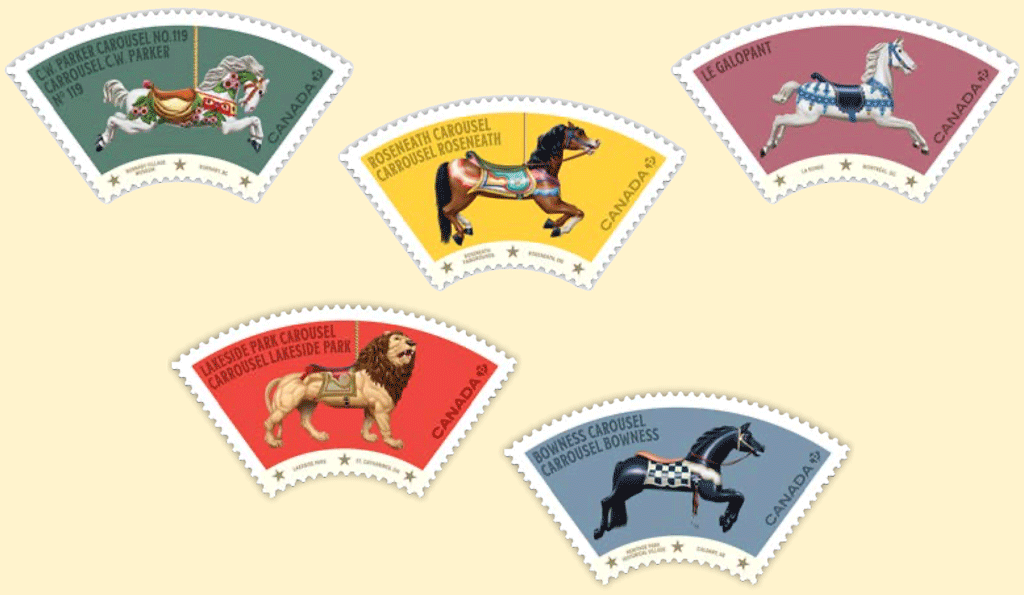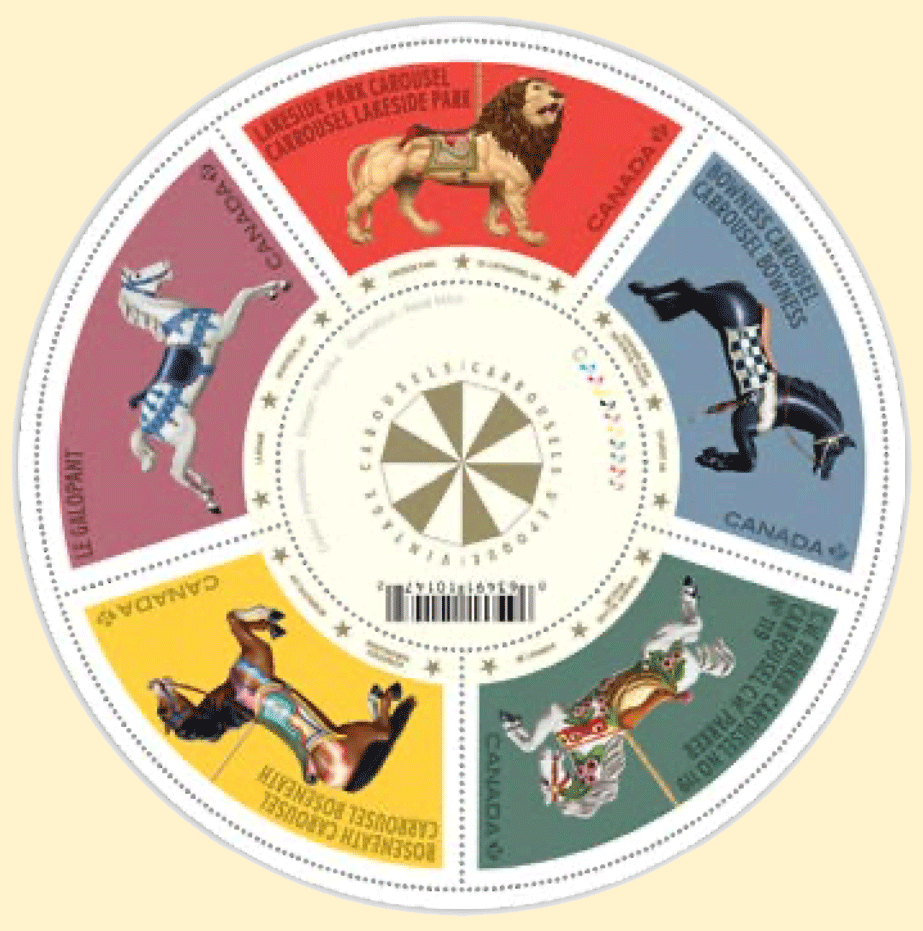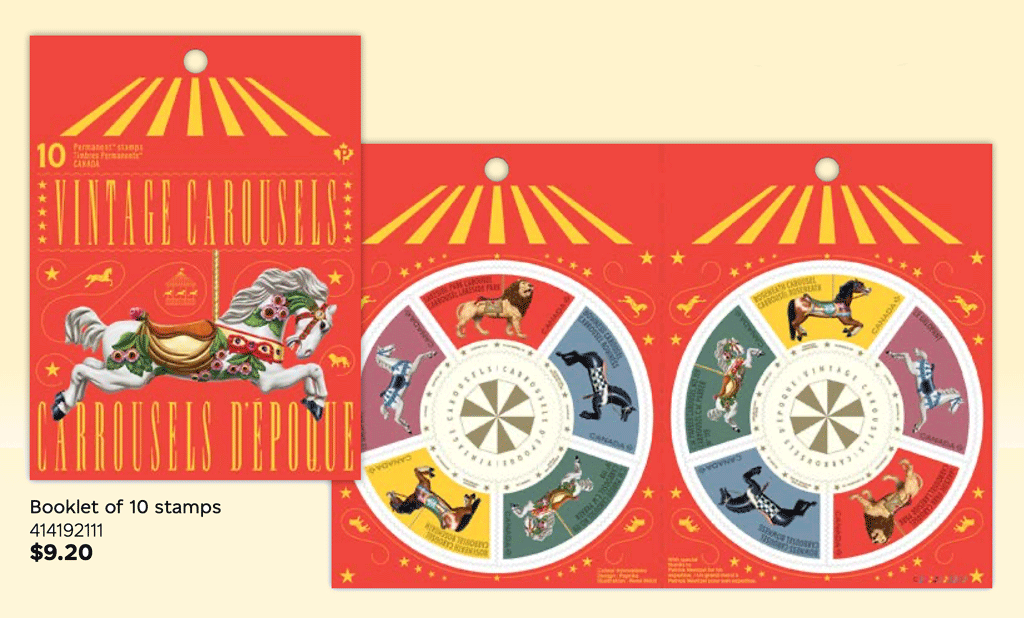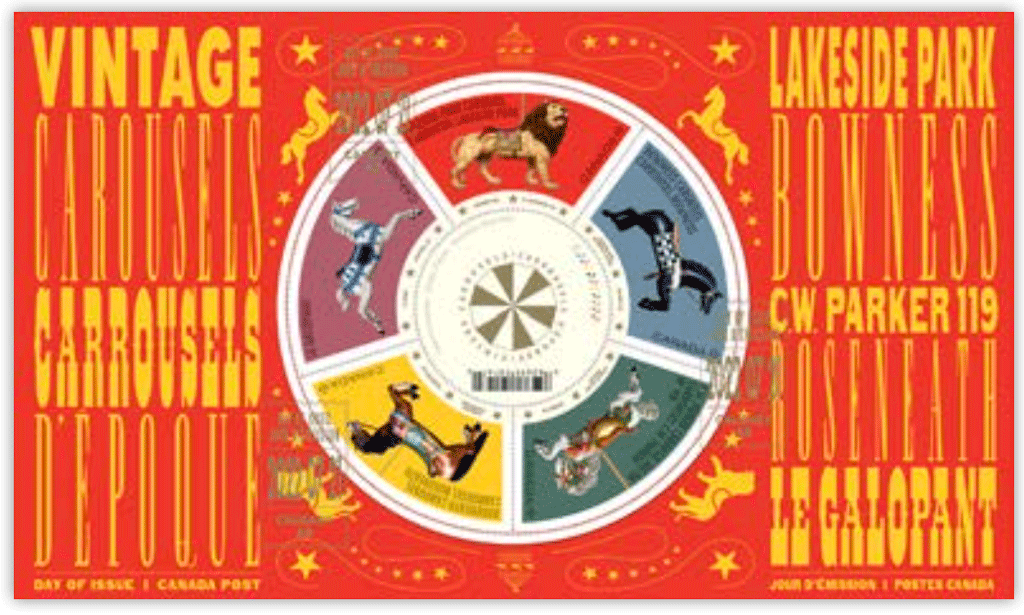Announced 4 November
[press release] [click on any of the pictures for larger versions]
New stamp honours acclaimed Canadian actress Monique Mercure
Quebec’s grande dame of stage and screen appeared in more than 80 films and TV productions
MONTRÉAL – Canada Post today issued a commemorative stamp celebrating Quebec’s grande dame of stage and screen, Monique Mercure. Known for her fiery spirit, versatility 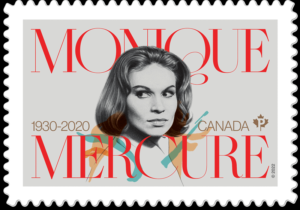 and powerful performances, Mercure (1930-2020) was one of Canada’s most beloved and acclaimed actresses.
and powerful performances, Mercure (1930-2020) was one of Canada’s most beloved and acclaimed actresses.
She began her acting career in the early 1960s at the theatre and made her film debut in 1963 in Claude Jutra’s À tout prendre. This kicked off a career that would extend over the next six decades. A household name in Quebec, Mercure performed in more than 100 classical and contemporary plays in North America and Europe and over 80 films and TV productions.
Some of her most popular films were Mon oncle Antoine (1971), J.A. Martin photographe (1977) – which earned Mercure Canada’s first Festival de Cannes award for best actress – Naked Lunch (1991) and The Red Violin (1998). She also appeared as a regular in popular French-language TV series Providence (2005-11) and Mémoires vives (2013-16).
Throughout her career, Mercure received numerous awards and honours, including two Genie Awards, two Prix Gémeaux, the Prix Denise-Pelletier, the Prix Gascon-Roux from the Théâtre du Nouveau Monde and a Governor General’s Performing Arts Award for Lifetime Artistic Achievement.
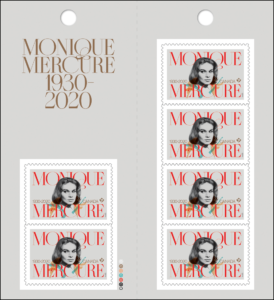 She was named an Officer of the Order of Canada in 1979 and promoted to Companion in 1993. Mercure was also named a Fellow of the Royal Society of Canada and a Grand Officer of the Ordre national du Québec.
She was named an Officer of the Order of Canada in 1979 and promoted to Companion in 1993. Mercure was also named a Fellow of the Royal Society of Canada and a Grand Officer of the Ordre national du Québec.
Mercure joins her peers from the performing community that Canada Post has honoured with stamps, including Fay Wray, Mary Pickford and Christopher Plummer.
About the stamp
The stamp features an illustration by Oriana Fenwich based on a photograph of Monique Mercure taken in 1963 by Henri Paul, courtesy of Radio-Canada Archives. The stamp was printed by Colour Innovations and designed by Underline Studio. Cancelled in Montréal, the issue includes a booklet of six Permanent™ domestic rate stamps, a pane of six stamps and an Official First Day Cover.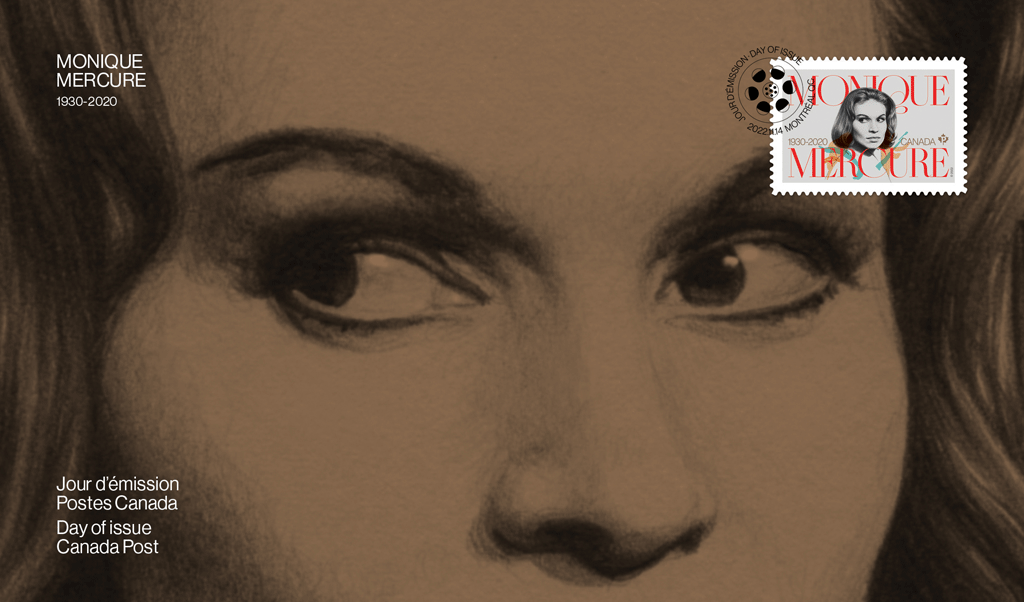
The stamp and collectibles are available now at canadapost.ca at post offices starting November 14.
Canada Post video:
[en Francais pour les médias d’information]
Un timbre rend hommage à l’actrice canadienne Monique Mercure
La grande dame de la scène et de l’écran au Québec a joué dans plus de 80 films et productions télévisées
MONTRÉAL – Postes Canada a émis aujourd’hui un nouveau timbre commémoratif en l’honneur de Monique Mercure, grande dame de la scène et de l’écran au Québec.  Connue pour sa fougue, sa polyvalence et son jeu d’une puissante intensité, Monique Mercure (1930-2020) compte parmi les actrices les plus admirées au pays.
Connue pour sa fougue, sa polyvalence et son jeu d’une puissante intensité, Monique Mercure (1930-2020) compte parmi les actrices les plus admirées au pays.
Elle amorce sa carrière d’actrice au début des années 1960 en jouant au théâtre et fait ses débuts au cinéma dans le film À tout prendre, de Claude Jutra, en 1963. Son ascension est fulgurante. Véritable icône au Québec, Monique Mercure joue dans plus d’une centaine de productions théâtrales en Amérique du Nord et en Europe, et plus de 80 films et productions télévisées au cours de ses 60 ans de carrière.
Ses films les plus mémorables comprennent Mon oncle Antoine (1971), J.A. Martin photographe (1977) – grâce auquel elle devient la première Canadienne à remporter le prix de l’interprétation féminine au Festival de Cannes –, Naked Lunch (1991) et The Red Violin (1998). Elle apparaît régulièrement dans les séries dramatiques Providence de 2005 à 2011 et Mémoires vives de 2013 à 2016.
Monique Mercure remporte de nombreuses distinctions, notamment deux prix Génie, deux prix Gémeaux, le prix Denise-Pelletier, le prix Gascon-Roux du Théâtre du Nouveau Monde et le prix du Gouverneur général pour les arts du spectacle de la réalisation artistique.
 Elle est nommée Officier de l’Ordre du Canada en 1979, puis Compagnon en 1993, en plus d’être reçue membre de la Société royale du Canada et grande officière de l’Ordre national du Québec.
Elle est nommée Officier de l’Ordre du Canada en 1979, puis Compagnon en 1993, en plus d’être reçue membre de la Société royale du Canada et grande officière de l’Ordre national du Québec.
Monique Mercure fait partie des personnalités du monde artistique à qui Postes Canada a consacré un timbre, aux côtés de Fay Wray, Mary Pickford et Christopher Plummer, notamment.
À propos du timbre
Le timbre est orné d’une illustration de Monique Mercure réalisée par Oriana Fenwick et inspirée d’une photo prise par Henri Paul en 1963, gracieuseté des archives de Radio-Canada. La vignette a été imprimée par Colour Innovations et conçue par Underline Studio. Oblitérée à Montréal, l’émission comprend un carnet de six timbres PermanentsMC au tarif du régime intérieur, un feuillet de six timbres et un pli Premier Jour officiel.
[press release] [click on any of the pictures for larger versions]
Canada Post recognizes acclaimed Canadian actress Monique Mercure
MONTRÉAL – On November 9, Canada Post invites you to attend the unveiling of a special stamp to celebrate the remarkable legacy of Canadian actress Monique Mercure, 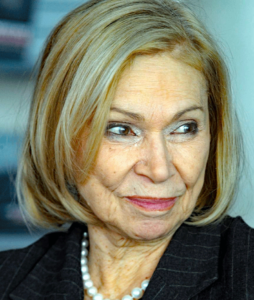 Québec’s grande dame of stage and screen.
Québec’s grande dame of stage and screen.
The upcoming stamp will be officially issued on Monique Mercure’s birthday, November 14, after it is unveiled in Montréal on Wednesday, November 9.
Who: Special guests:
Michèle Mercure, Daughter of Monique Mercure
Pier-Yves Larouche, Grandson of Monique Mercure
Louise Sicuro, Founder of Journées de la culture and friend of Monique Mercure
Simon Brault, Director and CEO of the Canada Council for the Arts
Patricia Tuslane, Actress and friend of Monique Mercure
Alice Ronfard, Director
The event includes a special performance from cellist Claude Lamothe accompanied by actress Sophie Clément. Quatuor Rhapsodie will also perform before and after the event.
Where: Rialto Theatre
5723 Avenue du Parc, Montréal
When: Wednesday, November 9, at 6 pm, Eastern Time
[en Francais pour les médias d’information]
Postes Canada rend hommage à l’actrice canadienne Monique Mercure
MONTRÉAL – Le 9 novembre, Postes Canada vous invite au dévoilement d’un timbre spécial qui commémore le talent, la beauté et l’héritage remarquables de l’actrice d’ici Monique Mercure, grande dame de la scène et de l’écran au Québec.
Le timbre sera émis officiellement le 14 novembre, date de l’anniversaire de naissance de Monique Mercure, après son dévoilement à Montréal, le mercredi 9 novembre.
Qui: Invités spéciaux:
Michèle Mercure, fille de Monique Mercure
Pier-Yves Larouche, petit-fils de Monique Mercure
Louise Sicuro, fondatrice des Journées de la culture et amie de Monique Mercure
Simon Brault, directeur et chef de la direction du Conseil des arts du Canada
Patricia Tuslane, actrice et amie de Monique Mercure
Alice Ronfard, metteure en scène
L’événement comprend une performance spéciale du violoncelliste Claude Lamothe, accompagné de l’actrice Sophie Clément. De plus, le Quatuor Rhapsodie se produira avant et après l’événement.
Où: Théâtre Rialto
5723, avenue du Parc, Montréal
Quand: Le mercredi 9 novembre à 18 h, heure de l’Est

